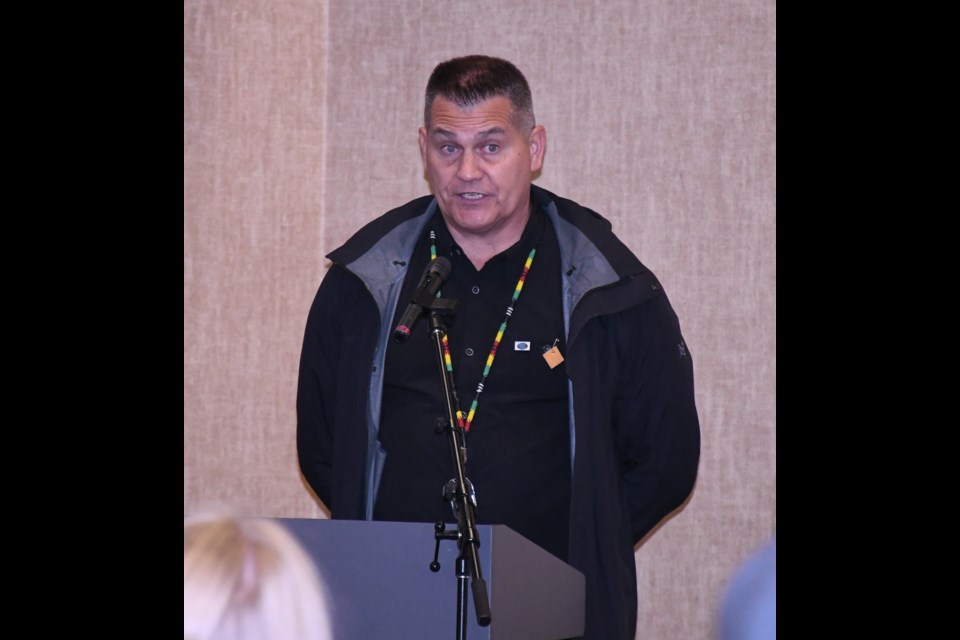A group of Saskatchewan Polytechnic students is putting their education to work by contributing ideas for a possible First Nations-focused cultural centre in Wakamow Valley.
Students in the architectural technologies program at the Moose Jaw campus gathered on Sept. 9 as part of a design day with indigenous architect Ray Gosselin and his company, Ray Gosselin Architecture Ltd.
Gosselin, who has Dakota ancestry, possesses over 33 years of architectural experience and leads a firm on the Red Dog urban reserve at the University of Regina. He has also been involved in reconciliation at every political level.
Alan Wallace with Wallace Insights and Terry Tian with Carpere Developments were also present for the design exercise.
“This is a once-in-a-generation opportunity for any city, but Moose Jaw in particular,” said Wallace.
This is a chance to take a nearly 70-year-old site that once housed or employed 1,700 people and develop it so it attracts people from near and far, he continued. The other goal is to retain its natural beauty so people can continue using it for healthy lifestyles.
Tian said that Wakamow Valley became one of his favourite places after moving to Moose Jaw years ago. He acknowledged that Carpere’s project faces challenges — especially with building codes — but “feels like something is leading us to this project” every time he walks there.
“We are looking forward to this as an opportunity and to make an attraction for Moose Jaw,” he added.
The day’s goal was to develop ideas for what the proposed cultural centre building could look like; students work in groups with business leaders and faculty. The potential venue is a component that Carpere Canada is contemplating — nothing has been finalized yet — as part of its Valley View Centre re-development project.
Carpere wants to develop 120 acres— out of 160 — and re-use some of the existing 320,000 square feet of building space.
“This is a wonderful opportunity to do something inspiring. This is an opportunity to blue sky ideas,” Gosselin told the students, adding architects need to understand their projects thoroughly and the cultural focus attached to them.
Gosselin enjoys connecting educational learning to actual ongoing projects, which is why he was grateful that Sask. Polytech contacted his firm about participating in the design day, he told the media afterward.
There is a history in Moose Jaw of wanting to build an interpretive centre because the idea arose in the 1990s, Gosselin recalled.
He was working at the First Nations University of Canada and was invited by Moose Jaw residents to come discuss developing an Aboriginal interpretive centre. However, while several people were interested in the project, it never materialized.
Carpere’s proposed re-development plan for Valley View designates some land for recreational and cultural use, so all three proponents hope the cultural centre happens, he said.
“We hope there are entities out there that will take it on. As someone who’s been involved with the First Nations University, I know that it takes a lot of energy (and) requires some will by Native people — especially elders — to make it an actual project to take it beyond an idea (and) to reality … ,” Gosselin added.
Joshua Koback, a second-year architectural technologies student, said participating in the design process was an exciting and “really, really unbelievable opportunity.” It allowed him to work with business leaders and program faculty while sharing different perspectives with other students.
“To be able to be exposed to so many different views (and) so many different mindsets (is great), but at the same time, being able to be one collective community toward one beautiful goal of essentially being as one (is also positive),” he said.
Koback and his classmates recently finished their internships with architectural firms across the province, so they were able to apply their experiences to the exercise. He thought they would have to communicate well to integrate their newfound knowledge effectively.




